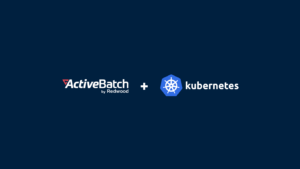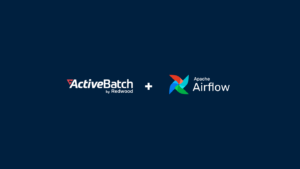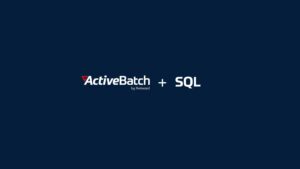Demystifying the job orchestration framework
Discover the role of job orchestration frameworks in enhancing task execution and the efficiency of your operations.

Your organization’s smooth operations depend on the successful execution of many intricate processes. Scheduling jobs for maximum efficiency can be daunting without a proper plan.
Job orchestration frameworks are like prescriptions for how to approach job scheduling — proven structures that drive optimal outcomes.
Read on to learn about the power of job orchestration, which frameworks are popular and the benefits of some popular job orchestration tools.
The importance of orchestration today
In the modern IT environment, the drive for efficiency is not merely a goal but an absolute necessity. With ever-growing volumes of data and the increasing complexities of data science, the ability to process data swiftly and generate reliable pipelines is paramount.
Rather than using automation tools in silos that can result in inefficiency, IT teams can drive coordination across departments and functions. Orchestrating tasks effectively ensures streamlined operations, prevents task overlap or repetition and safeguards against potential system failures. Absent a competent orchestration framework, organizations may face challenges that could hinder optimal performance and jeopardize critical processes.
Understanding job orchestration frameworks
A job orchestration framework is the control center for managing many software applications, data processing activities and their interrelated dependencies. By providing a structured environment for task execution, the framework guarantees you can initiate, monitor and complete tasks with optimal efficiency and precision.
The best frameworks minimize errors, handle unexpected scenarios and ensure that resources are allocated properly, making them indispensable for complex processes. Having such a framework means smoother operations and better resource management.
Frameworks speak the language of modern software
Orchestration is about seamlessly coordinating automated tasks. Its main function is to manage multiple tasks to ensure each is triggered and completed in the appropriate order and at the correct time.
In the context of software development, workflows plan the order in which a series of tasks should be executed. Meanwhile, automation employs software solutions to carry out these tasks, thereby minimizing manual intervention and maximizing efficiency.
The contemporary software ecosystem has embraced microservices, which are modular, independent components that collectively make an application more agile and maintainable. These microservices interact and exchange data using APIs (application programming interfaces). Orchestration frameworks step in to ensure that these microservices and APIs interact efficiently and without conflict.
Spotlight on open-source job orchestration frameworks
The open-source realm, prominently featured on platforms such as GitHub, is a treasure trove of orchestration frameworks, each with its unique strengths and functionalities:
- Apache Airflow: Renowned for its data pipeline creation capabilities, Airflow employs directed acyclic graphs (DAGs) to represent sequences of tasks and their dependencies. This ensures each task runs in the correct order. Its visualization and lifecycle management features set it apart.
- Docker: Docker’s primary focus is on applications inside containers, but its orchestration prowess, particularly with Docker Swarm, deserves acknowledgment.
- Kubernetes: An open-source giant, Kubernetes is tailored to automate, deploy, and manage application containers.
- Python-based orchestration: Python’s adaptability has endeared it to developers. Tools like Luigi, a brainchild of Spotify, facilitate adept workflow orchestration with Python code.
Curious how job orchestration platforms compare? See our comparison of ActiveBatch vs. Control-M.
A new era in orchestration
Leveraging cloud services such as AWS and Microsoft Azure can boost the impact of orchestration efforts. Because they offer extensive tools and services for container orchestration, real-time data processing and automated alerting, these platforms are the perfect complement to a job orchestration framework. Cloud-native solutions provide additional scalability and flexibility to make orchestration solutions even more powerful.
Artificial intelligence (AI) can further optimize your task management by predicting failures and recommending the best execution paths.
Some orchestration solutions come with pre-built templates and connectors to simplify integration and help you develop truly end-to-end workflows. They may also support various formats and data integration needs. If your environment requires diverse data processing and application management, these tools are especially convenient.
Achieve end-to-end process orchestration
Given the mounting intricacies of orchestration in complex IT ecosystems that mesh data pipelines, microservices, interconnected apps and more, it’s clear that having a reliable orchestration tool isn’t a luxury. Yet, the orchestration landscape is large, with numerous tools vying for attention.
ActiveBatch’s orchestration functionalities stand out. Not only does the easiest-to-use workload automation platform provide top-tier workflow orchestration capabilities, but it’s also meticulously designed to support a variety of tasks, from optimizing intricate batch jobs to navigating the complexities of big data orchestration. Its versatility ensures businesses can implement end-to-end automated processes with a unified tool. Book an ActiveBatch demo to witness its transformative capabilities as a job orchestration framework firsthand.
Job orchestration FAQs
Job orchestration is the automated coordination and management of multiple tasks in a workflow. It ensures tasks are executed in the correct sequence, handling dependencies, scheduling and errors to optimize and streamline business and IT processes without manual intervention. The result? Improved efficiency and reliability in complex systems.
Learn more about orchestration tools here.
Orchestration can apply to many industries and use cases. You can orchestrate jobs to automate the deployment, scaling and management of applications across cloud environments. Or, use it in a DevOps environment to coordinate continuous integration and continuous deployment (CI/CD) processes and ensure smooth software development and delivery.
Many organizations use job orchestration to manage extract, transform and load (ETL) processes, SQL data validation and data transfers. This is particularly important in data engineering where the coordination of data flows and compute resources is crucial. It’s also a great tool for orchestrating communication and data exchange between microservices in a distributed system.
Discover more about workload orchestration and batch processing.
An orchestration framework provides a structured platform to automate, coordinate and manage complex computational tasks and services. It typically includes tools for defining workflows, handling task dependencies, scheduling jobs and monitoring execution. These frameworks enable optimization of large-scale processes and support cloud-based and cloud-native environments, ensuring all activities are documented for auditing purposes.
Integrate, automate, and monitor your entire tech stack from a single point of control with ActiveBatch orchestration software.
While ETL focuses on data processing and its transfer to a data warehouse, job orchestration has a broader scope. Job orchestration harmonizes a wider range of tasks, so it’s not limited to data handling and includes the coordination of various processes.
Learn more about simplifying big data with data orchestration.







